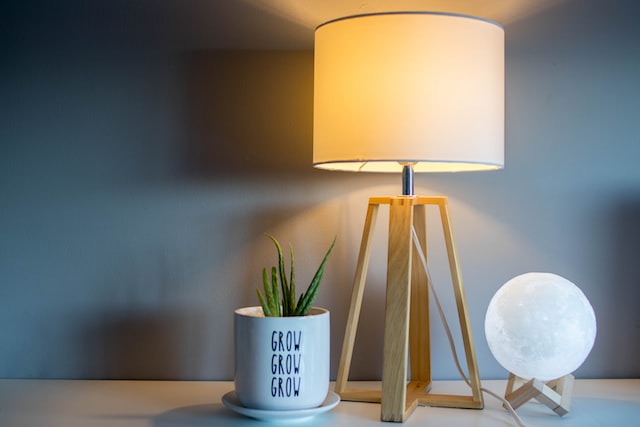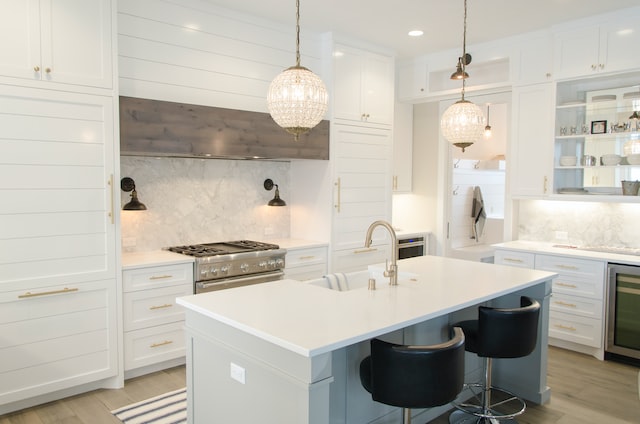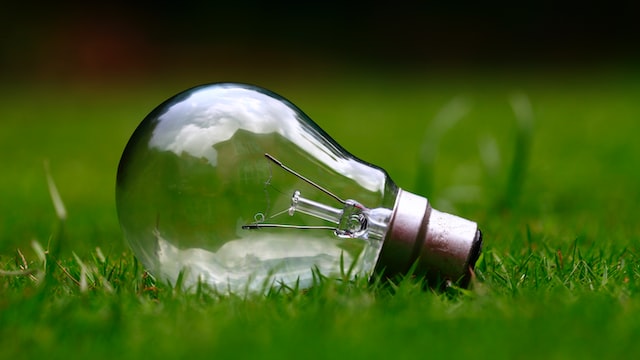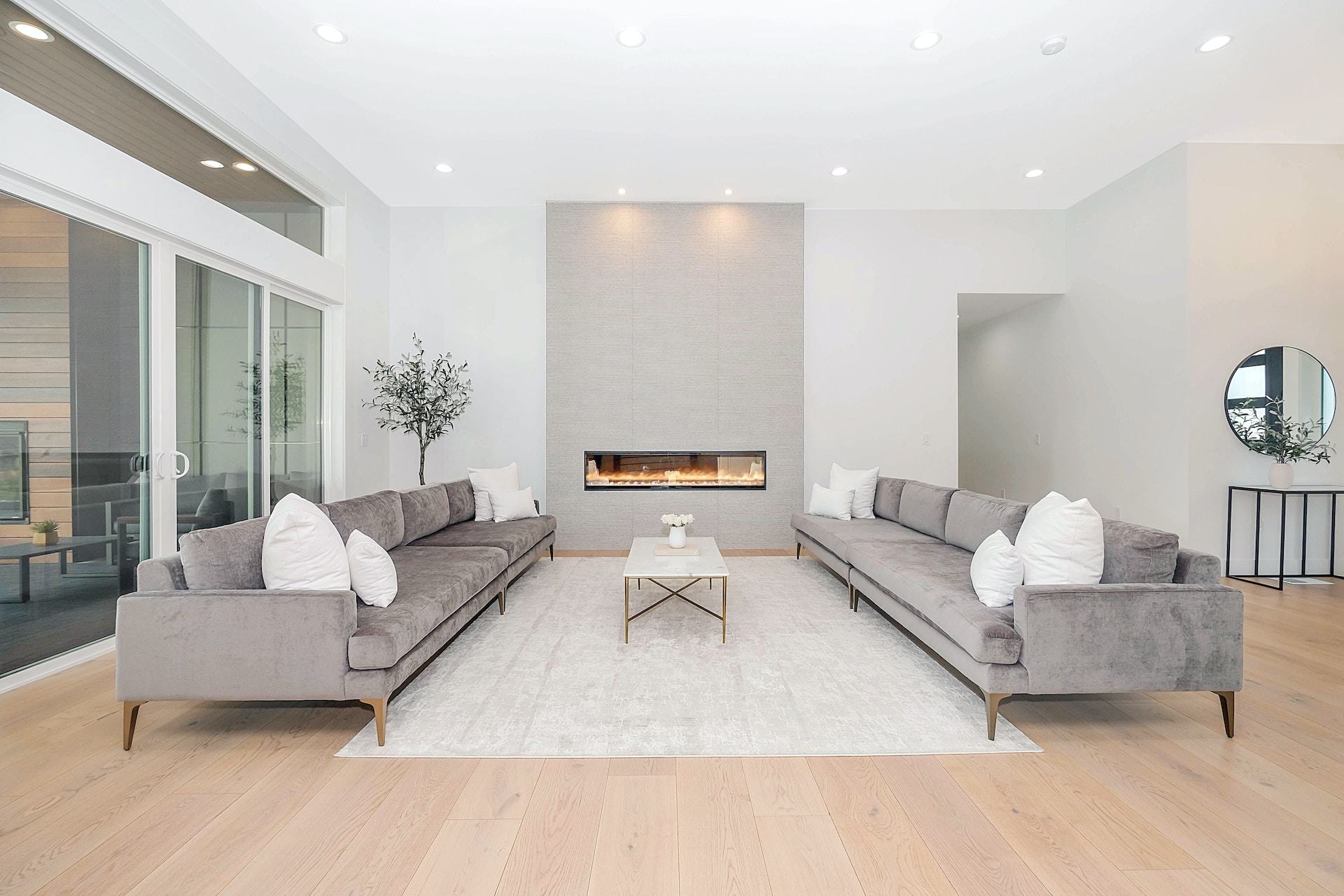Everything from cars and transportation to businesses and homes is headed toward green energy. With the growing pressure on our climate’s health, joining the eco-friendly movement is more necessary than ever. Choosing green energy for your home lighting projects is an impactful way to ensure you’ll create a smaller carbon footprint. It also helps reduce your utility bills year-round and creates a sustainable system for years.
Awareness around climate change continues to increase each year as homeowners face rising costs and harmful environmental effects from traditional electricity. Increased extreme weather events, droughts hitting urban and suburban areas, and unpredictable circumstances from environmental changes make minimizing your personal impact vital.
Create an environmentally conscientious household and make a positive impact on the planet. The following tips will help you become an expert in your home lighting projects.
Choosing the right bulbs for energy efficiency
With so many options to choose from when it comes to energy-efficient lighting, finding the correct bulbs for your home light project can be overwhelming. Here are some of the most popular energy-efficient bulbs available:
- LEDs – LED bulbs, or light-emitting diodes, are the most well-known energy-efficient bulbs on the market. They use up to 90 percent less energy and last up to 25 times longer than traditional incandescent bulbs. You can find them in many colors and styles, including smart bulbs.
- CFLs – CFL and fluorescent tube lights are other popular alternatives to incandescent bulbs. They last about 10 times longer than a conventional bulb and are about four times more efficient.
- Halogen – Typically, halogen bulbs have the lowest upfront cost for energy-efficient bulbs, making them a common choice. But they also have the highest lifetime cost since they need to be replaced more often and aren’t as efficient as LEDs or CFLs.
Enhancing your home lighting with dimmers and sensors
Energy-efficient dimmers and sensors make a great addition to your home lighting project.
- Outdoors – Outdoor sensors and timers make it easy to keep lighting off when not in use. Sensors create strategic automation that pairs an eco-friendly system with a convenient and modern design. Sensors react to movement, sound, or time, making efficient lighting effortless.
- Indoors – Dimmers compatible with LED bulbs allow you to control your energy use better than standard dimmers. Make sure to install both LED-friendly dimmers and purchase dimmable LED bulbs. Most standard LED bulbs won’t work well with standard dimmers since the energy is dispersed differently than incandescent bulbs.

Harnessing the power of solar panels
Solar panels decrease your grid dependency, significantly lower energy costs, and help to reduce emissions that harm our climate. Solar panels come in many sizes, power levels, and prices. Here are some of the most popular options:
- SunPower Maxeon 6 – SunPower Maxeon panels have a very high efficiency ranging from 19.8% to 22.8%. They feature premium N-type shingled cells and fall into a high price bracket, averaging $3.12 to $3.74 per watt.
- REC Alpha Pure R – The Alpha Pure R from REC also features a very high-efficiency rating, maxing out at 22.3%. Designed with a mix of N-type and Heterojunction cells, these panels have a high price range of $2.32 to $3.10 per watt.
- Canadian Solar CS6R-H-AG – Canadian Solar’s CS6R is considered highly efficient at 22.5%. They feature a combination of N-type and Heterojunction cells, with an average, middle-range price point of $0.60 to $0.90 per watt.
Illuminating our outdoors with solar panel lights
Solar panel lights are low-maintenance outdoor lighting that adds curb appeal to your home. Look for a professional company to install solar lighting to ensure your vision is perfectly executed. The cost of both the lighting and the installation varies according to your design preferences and region.
Search for expert electricians to install your solar lighting, which can save time, effort, and money in the long run. Professionals offer peace of mind and ensure you have a system or lighting set to last long-term.
Strategic lighting for energy conservation
In your quest to conserve energy and lower your power cost, task lighting can be equally helpful as primary overhead ambient lighting for your home lighting project. Lighting a painting, illuminating a staircase, or placing a reading light by your bed are examples of task lighting that make overhead lighting necessary less frequently. By installing functional task lighting, you create ample illumination in any room while using a fraction of the energy an overhead light uses. For lighting convenience in the evening, invest in table lamps for hobbies or focus lighting that highlights your favorite works of art.

Tips to reduce energy waste and costs
If you love nature and find solace on a beautiful spring day, leisurely autumn hike, or brisk winter walk, you know how crucial it is to care for the planet. Create positive change by modifying your daily behavior and ensure we’ll be able to continue enjoying our natural environments. Designing a more energy-efficient home lighting project promises a brighter tomorrow inside your home and across the globe.
Unplug power strips and other lighting plugins
Unplugging any electronics when not in use significantly reduces trickle electricity. Trickle electricity is the same amount of energy that continues to be produced when an electronic device is plugged in but not turned on. Using power strips for places with multiple lighting devices plugged in makes it easy to unplug the power strip when not in use to cut down on trickle electricity. You can also purchase energy-saving smart appliances or eco-friendly power strips to help eliminate electrical waste.
Turn off the lights
Get your whole household in the habit of turning off the lights when they leave a room, don’t need the light source anymore, or are leaving the house for the day. Creating this positive habit prevents electrical waste and reduces unnecessary energy consumption.
Cleaning and maintenance
Regularly cleaning and maintaining your eco-friendly appliances, accessories, lighting, and devices keep them working as efficiently as possible, which reduces drag on energy consumption. Follow the manufacturer’s recommendations to keep solar panels, solar panel lighting, outdoor lighting, water heaters, furnaces, and air conditioners clean and well-maintained. The less build-up on these devices, the easier they run. This lowers costs, keeps your home environmentally conscious, and ensures a longer device life.
Installing new windows
The best option is always natural light. Installing a window or replacing the old ones. To capture solar energy, you should install environmentally friendly windows whose installation helps to cut greenhouse gas emissions.
Exploring green energy options with your electric company
Check with your local electric company to see what incentives or services they offer to support your home lighting proyects. The United States has the highest per-capita greenhouse gas emissions of any other county. Take easy steps to cut planet-warming emissions like carbon dioxide while saving money. According to a recent University of Michigan study, energy-efficient households can save up to $1,560 per year on natural gas and utility costs over 50 years. Make your next home light project green to reduce cost, decrease environmental impact, and stop using unnecessary energy. A green home immeasurably benefits you, your neighbors, and the planet.
The connection between well-lit homes and home insurance
Home insurance is crucial to protecting your property and belongings from unforeseen events. While insurance policies may vary, it’s important to recognize the connection between a well-lit home and the benefits it can bring to your home insurance coverage. By understanding this relationship, homeowners can reduce insurance risks, enhance their coverage, and even enjoy cost savings.
Increased security measures: Home insurance providers assess the level of risk associated with insuring a property. A well-lit home can be viewed as an additional security measure by insurers. Having a well-lit exterior demonstrates a proactive approach to minimizing the risk of theft or vandalism. Insurance providers may perceive this positively, potentially leading to more favorable coverage terms and premiums.
Reduced risk of break-ins and vandalism: A well-lit home acts as a deterrent to potential burglars or vandals. Adequate outdoor lighting illuminates entry points, making them less attractive targets. Insurance providers recognize the value of preventative measures in reducing claims related to break-ins and vandalism. By investing in proper lighting, homeowners may decrease the likelihood of such incidents and consequently lower the risk associated with their insurance policy.
Enhanced safety measures: Home insurance policies often cover personal liability, including injuries on the insured property. A well-lit home reduces the risk of accidents and injuries, improving safety for residents and visitors. Illuminated pathways, stairs, and other potential hazards help minimize the chances of slips, trips, and falls. Insurance providers may view these safety measures positively and offer more comprehensive coverage options or favorable terms.
Mitigation of property damage: Home insurance policies typically cover damage caused by covered perils, such as fire or storms. A well-lit home can contribute to early detection of hazards and potential risks, reducing the likelihood of severe damage. For instance, proper lighting can help identify faulty electrical wiring or signs of water leaks, allowing homeowners to address these issues promptly and prevent larger losses. Insurers appreciate proactive risk management, and a well-lit home may demonstrate responsible property maintenance, potentially influencing insurance coverage and premiums.
A well-lit home provides enhanced security and safety for residents and has implications for home insurance coverage. By reducing the risk of break-ins, vandalism, accidents, and property damage, homeowners with well-lit properties can potentially enjoy more favorable insurance terms, comprehensive coverage, and even cost savings. It is advisable to consult with your insurance provider to understand the specific benefits and any potential discounts associated with having a well-lit home.
Glossary of green lighting terms
Here are some helpful glossary terms to help you navigate information while working on your climate-friendly lighting project:
- Ambient lighting – Everyday indoor or outdoor illumination for safety, visibility, or security purposes.
- Color temperature – The color produced by a bulb. Lights that create a yellow-red hue are considered warm. Blue-green hues are considered a cool temperature.
- Efficacy – The ratio of light produced (lumens) to the energy consumed (watts), determining how energy-efficient a light bulb is.
- Footcandle – The intensity of light emitted by a bulb, measured as one lumen over a one-square-foot area.
- Heliodon – A heliodon is used by engineers, builders, and architects to simulate sunshine.
- Light-emitting diodes (LEDs) – A semiconductor device that can emit light when an electric current passes through it.
- Lumen – The brightness of light emitted by a bulb, separate from the amount of electricity the bulb uses.
- Task lighting – Illumination used for specific tasks that require more than ambient light can provide.
- Watt – A measurement of the amount of electricity used to power a light bulb, not to be confused with brightness or lumens.

Going green on your next home lighting project helps reduce your greenhouse gas emissions and make a genuine and lasting impact on the well-being of our planet, so if you already have a house, remodeling some parts of your home to make it eco-friendly would be very helpful for you and the environment. With the wide selection of green energy lighting products and systems, thoughtfully revitalizing your home lighting is easier than ever. Follow these simple steps to becoming an eco-friendly DIYer and an environmentally conscientious homeowner.




